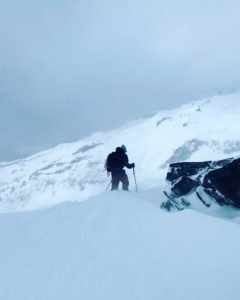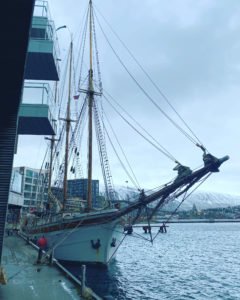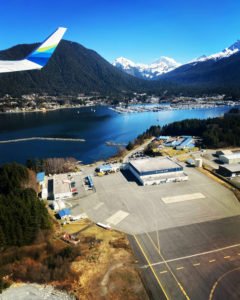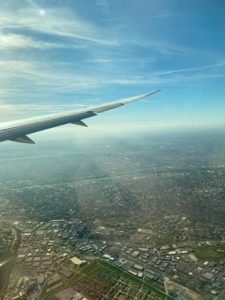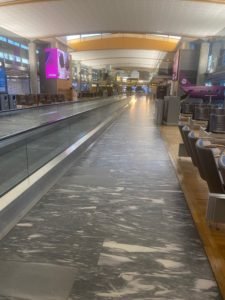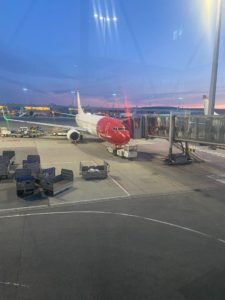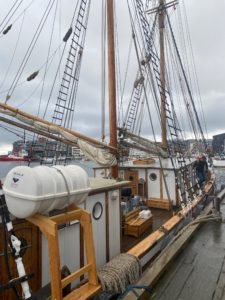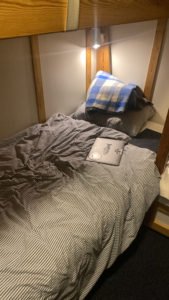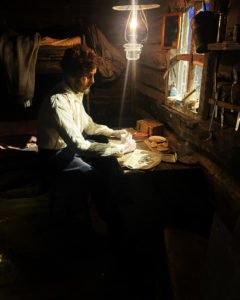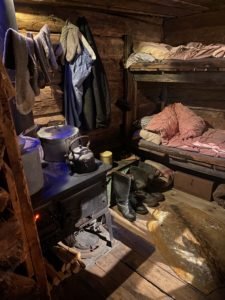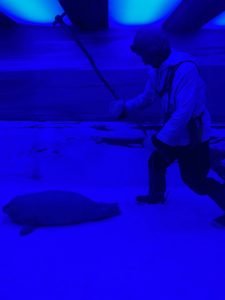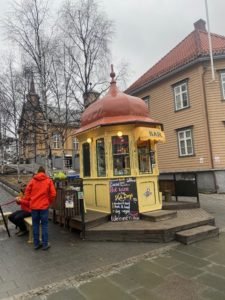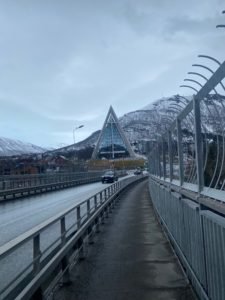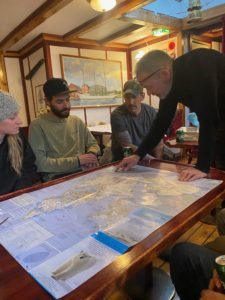Expedition to Svalbard
Five days ago I left the family in Sitka to begin a journey to Tromsø, Norway, the home port of the Linden, the boat pictured above. This will be our home for the next two weeks as we venture north to the Svalbard Archipelago, just sixteen degrees beneath the North Pole. Once arrived we’ll investigate Soviet-era mining sites, make some first ascent/descents by ski and glacier boot, watch for polar bears, and just be there in this land owned by no country, just the wild.We’ll be using inflatables to approach glaciated fjords, wind-scoured mountains, and thawing permafrost, checking out abandoned whaling stations, seal rookeries, all in an effort to make a record of how this thawing land – once a tropical home to dinosaurs since broken off from Pangea – reacts in real-time to climate change.
“Svalbard,” which means “cold coasts,” was first mentioned in Icelandic texts in the 12th century. Located between mainland Norway and the North Pole, the archipelago is known for its stark and eerie beauty. It’s a place I’ve long wanted to go. Svalbard reindeer, Arctic foxes, and a few thousand polar bears prowl the glaciers, while beluga and bowhead whales sound offshore. It’s one of the world’s northernmost inhabited areas, with 2,000 people living in Longyearbyen, the largest settlement of the islands.
On the way to Norway I spent a couple days in Seattle, testing out gear with my buddy John Maxey, of Mint 400 and Patagonia fame who is also coming along for the trip – no adventure complete without him. He took me up Mt. Rainier, which had much more snow than either of us had been expecting. On the mountain it blew and snowed some more. After skinning about 2000 feet up, trying not to get blown off the side of the incline, we started to hit downhill grade – but that was rough because we still had skins on. Felt like a mouse slipping down an inclined glue trap.
Properly traumatized – this had been John’s goal all along, he told me – I flew from Seattle to Paris, doing my best to get a shot of the Eiffel Tower for the girls to see as we landed (it’s there if you zoom!). Took one more photo of the stunning F terminal, along with a LADUREE meringue stand that would have caused my oldest daughter to faint.
Then from CDG to Oslo, an airport disturbingly quiet and sane (they even had special security lanes for children – it makes so much sense, c’mon America). Took the late flight two hours north to the Gateway of the Arctic, arrived about midnight, caught a taxi into town to the Old Harbor from a perplexed Moroccan, and there was our boat, rising out of the dark, three pine masts appearing out of a different era completely.
Constructed in 1993, the Linden is modeled off a Danish schooner from the 1920s. The skipper, Rasmus Jacobsen, has sailed between Denmark and Norway, and taken the boat to Svalbard a number of times – under sail. This is the trip we will be starting today.
We’re here on the boat with six other Americans, and three Swiss. There are supposed to be two Swedes joining us as well, but at the moment they’re MIA – no clear word on whether they’ll be joining us for the journey.
Photographer Jordan Rosen, who I worked alongside for the GQ article you can read here, organized the trip and invited me along as the writer. I’ll be writing a piece, probably for Harper’s Magazine. To properly capture the light and mystery of the Arctic, Jordan has brought along a stupid amount of analog Kodak film, while I’ll be using Rite-in-the-Rain journals. It will be so nice to get off this laptop and write for real, if I can still remember how.
Onboard we’ll also have a world-class ski guide to make sure we don’t get avalanched (three French guys died a couple weeks ago in an avalanche not far from here) and an active duty JSCO Special Forces soldier, who trains Marine Special Forces to climb mountains. He says he will happily rescue us in case we do get avalanched. Thank god for PJs.
Since I arrived in Tromsø, I’ve been exploring this funky town, which seems to have developed as a base for Arctic exploration. We made a trip to the Polarmuseet, and saw very convincing wax figures of a Norwegian clubbing a baby seal, along with an actual trapper’s cabin taken from the wild and moved into what had once been the Custom’s House in town, and a walrus skeleton – holy hell those things are crazy. Also a bust of Roald Amundsen, which revealed the secret of how he made it first to the South Pole – using his very impressive eye brows to fly across the ice. I wanted to get a photo of it, but his beady blue eyes, even in death, were too intimidating.
Jordan arrived on the 16th, along with the others. We all battled jet-lag, trying not to nod off over beers at a velvet-couched bar in this surprisingly chic downtown – and then a strange thing happened. Yesterday we stopped at what is called the “Smallest Bar in the Universe,” had a cup of spiced wine and a reindeer hot dog by a coal fire – and, as happens with overseas travel, we all slid into the groove. As so often happens with travel, there is an almost audible click, usually brought on by food, when the world, the clocks, the smells and sounds – suddenly make sense. And so it happened with the reindeer hot dog with its fried onions and beets and sweet ketchup and the spiced wine with its cinnamon and floating almonds and raisins you ate with a small wooden spoon and the glowing coals in their swinging cast-iron tray – the combination of it all slid the world into place. We ready for whatever adventures were to come. Thank you Smallest Bar in the Universe.
So far the biggest obstacle has been SAS loosing the skis of Jordan and Ben – apparently they made it down to Bergen instead of going north. So the working plan today is to wait for them to come on the 12:55 pm flight, then take off shortly after in order to catch the tailwinds of a low-pressure system moving east across the Barents Sea.It will take six hours to make it out of the islands into the open sea, at which point our three different teams will begin their respective shifts at the helm, sailing the boat by compass with an eye out for drift ice. We’ll all take turns throwing up, and then – once more – settle into the groove of sailing.
Rasmus, our captain, briefed us last night on the journey ahead, detailing responsibilities, promising Arctic suits with slits where the eyes look out for our helm watches. “It will be cold,” he warned. I took a run over the bridge here in Tromso in check out a Sami-inspired church, listening along the way to Barry Lopez’s hypnotizing descriptions of musk-oxen fighting and mating rituals. That bridge and that church and that jog will forever be associated with the curl and boss of musk-oxen horns, and a particular North African restaurant on the corner before the bridge from which sense of deeply stewed spinach and fried bread emanated.
A nice thing to note, especially for the trolls who will naysay this trip on the grounds that we are creating so much carbon by taking planes here, and therefore shouldn’t even be traveling a place melting at twice the global rate – the carbon footprint of the expedition will be offset by Aerial, an official partner for the expedition. Clothing is provided by Colorado-based purveyor VOORMI, while Buck Knives will ensure crew members will each have a sharp blade handy. In other words, as well as having qualified medics onboard, we’ve got good clothing, and our consciences are clear.
In addition – and this is crazy, but also crazy interesting – this Svalbard expedition marks the first journey in a series of Expedition Token projects. This means that we will be selling NFTs of our journey in order to raise the funds for the trip – here is the link to the expedition page. Check it out. Buy an NFT, and earn rights to get one of Jordan’s negatives sent to you, or a page from the journals I’ll be using along the way. Imagine that – a writer’s pages being traded like baseball cards. It’s happening. Auction starts on April 24th.
Departure is imminent – as I write I can hear the crew tying objects down on deck. Rasmus has said that there’s a small chance we’ll be able to drop anchor at “Bjørnøya,” a pristine and solitary island at 74 degrees North, just about directly in the middle of the Barents Sea between Spitsbergen and mainland Norway. But it looks as if the winds will be blowing from the east, taking away the possibility of anchoring in one of the bays. Which is too bad – the island, called “Bear Island,” has many polar bear and a few old walrus blubber stations. But from what I’ve read, Svalbard will be full of them.
We’ve also been warned against stopping at Barentsburg, a Russian coal-mining operation that I’d love to see not far from Longyearbyen, the largest settlement (2000 people) in Svalbard. Apparently, if people in Longyearbyen know you’ve been to Barentsburg, they get pissed, and might not let you even anchor outside of town. That said, we’re all fired up about seeing Pyramiden, the Soviet-era coal-mining operation across the bay. Apparently the sea ice is particularly bad this year, but there’s a chance of being able to ski in to the place. Rasmus says, considering the weather, there will only be a few people, including a Russian guard or two. Again, the timing doesn’t seem optimum for checking out such a place, both in season and geopolitically – but seize the day. We might have to go.
Okay, deck chores await as we prepare to leave, and others are giving a hand, so I’ll do the same. The crew has told us that it takes three people to raise and lower a sail, so it will be all hands on deck at some point. Good news being that we’ll be in the land – or ocean – of the midnight sun very soon. Impossible to say exactly where we’ll be able to make landfall due to all the ice around Svalbard, but very much looking forward to encountering polar bear – from afar – and hearing the whoosh of a beluga off the stern. I brought binoculars. Once of the coolest things about going by sail instead of motor – how quiet we’ll be as we work our way in and out of fjords, how unthreatening to wild creatures.
